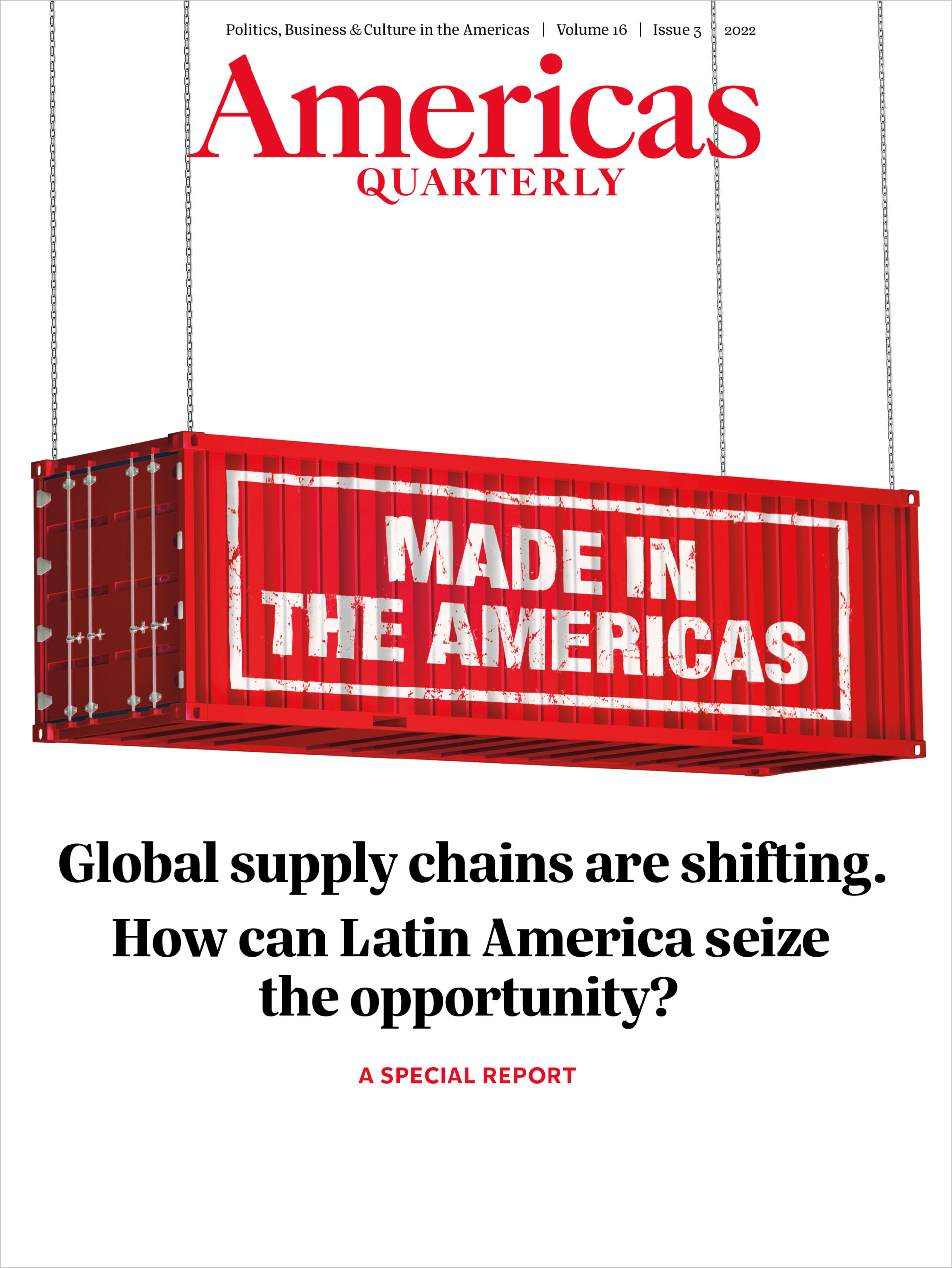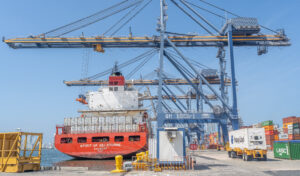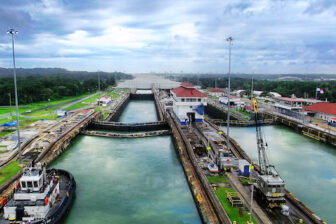This article is adapted from AQ’s special report on supply chains | Leer en español | Ler em português
It may sound like hyperbole, but it’s true: Today offers the best chance in a generation for Latin American economies to change the way they interact with the world, and with each other. The lessons from the pandemic, the war in Ukraine, and a growing ideological alignment among governments in the Americas have all made “nearshoring” and regional integration the buzzwords of the moment.
The opportunity is clear. Only 15% of Latin America’s overall trade happens within the region, compared to 38% in North America and 55% in the European Union. Some of the region’s economies, particularly Brazil, Argentina and Colombia, have among the world’s lowest ratios of trade to GDP. Any effort to integrate economies will help produce quality jobs, and generate growth, at a time when both are acutely needed in the wake of COVID-19.
Challenges abound. As Shannon O’Neil writes in this issue’s cover story, governments will have to address a legacy of poor intraregional infrastructure (only one highway in South America connects the Atlantic with the Pacific), maddening bureaucracy, and longer-term challenges to competitiveness like education, which has been dealt a devastating setback by the pandemic. Many global companies moving production out of China are so far betting on other Asian countries like Vietnam and Thailand instead of El Salvador, Brazil or Panama.
But it’s important not to exaggerate the obstacles, or indulge in defeatist rhetoric like “Latin America never misses an opportunity to miss an opportunity,” as our editors heard more than once while putting together this issue. In fact, many nearshoring projects are already happening. Colombia’s incoming foreign minister cited regional integration in his first message following his nomination, one of several signs that politicians understand the moment at hand. This issue provides a partial roadmap to help make it a reality.











